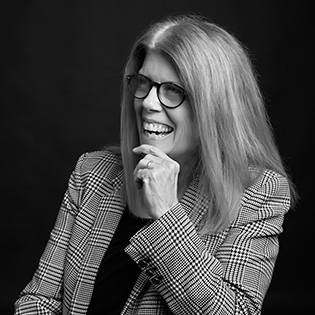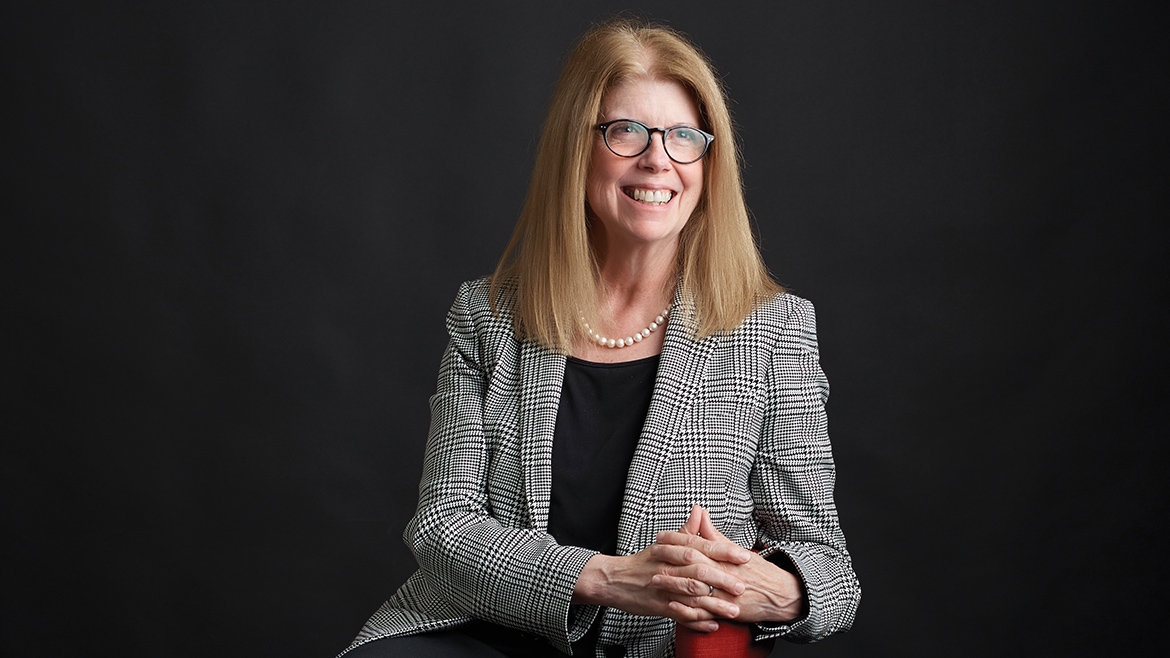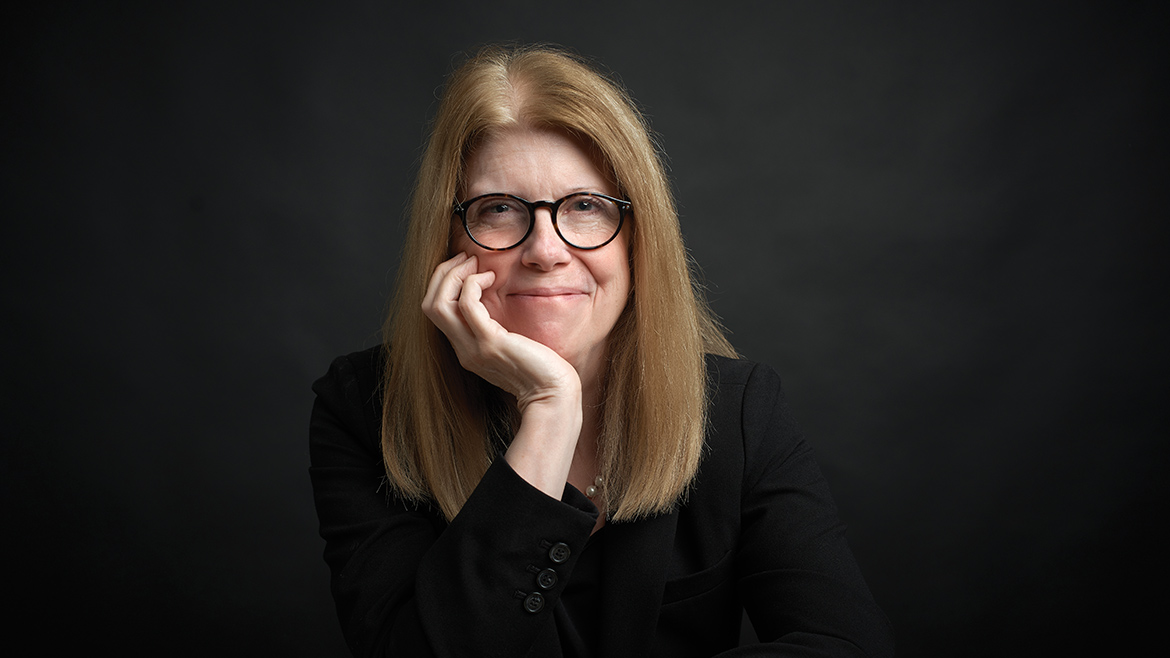Dianne Lynch’s Master Class


Led by President Dianne Lynch, Stephens College solidifies a niche for itself in the changing landscape of higher education.
Dianne Lynch visited Columbia once in the ’90s for an event and remembered the heat and humidity.
“I remember being here and thinking, ‘Who lives here?’” Lynch says. “‘Why would anybody live here?’”
Lynch had been interested, from a young age, in women’s leadership and women’s issues. She saw a job posting in 2009, while serving as dean of the Roy H. Park School of Communications at Ithaca College: Stephens College, a small women’s college, in that same muggy town, was searching for a new president.
Lynch, who held a B.A. and M.A. in journalism and mass communication and finished her Ph.D. in art history and communications, had transitioned from her early days as a reporter to being a professor, and had spent two decades in higher education.
Moved by the opportunity, despite the humidity, she spoke with a friend, another dean at Ithaca. “There’s just something about this job — I think I have exactly what they need,” Lynch recalls thinking. “I think that this is my job.”
Her fellow Ithaca dean stared for a moment. She’d done her undergrad at Stephens. More than 4,000 higher education institutions in the country, and the one person Lynch confided in went to the tiny women’s college in mid-Missouri.
“The universe has spoken, right?” Lynch says. “So I walked into the job interview and said, ‘I’m here to tell you I’m the only person for this job. Here are the 59 reasons why.’”
Whatever Those Needs Might Be
Founded in 1833, Stephens began as Columbia Female Academy. Throughout its history, Stephens College has prepared women for the lives that await them, meeting the needs of its students, whatever those needs might be.
Lynch’s office is filled with gifts and notes from students, hedgehogs of all shapes and sizes (we’ll get to that later), and, in the corner of Lynch’s office (because, obviously, she got the job), a large, golden bust of James Madison Wood, whom Lynch credits with creating the modern culture of the college. Wood became president of Stephens in 1912.
“He believed, in the 1920s and ’30s, that women could do anything, and that they should be empowered to do that,” Lynch says. “And that everything about educating women should be about preparing them for the lives that await them.”
What awaited them changed, and Stephens changed with it. Under Wood’s leadership, the school spent two years amassing journals from women on their everyday lives: responsibilities, obligations, activities. They built a curriculum around that to serve the needs of women.
“Nobody did that,” Lynch says. “And for women? Nobody did that.
“There’s this profound cultural assumption,” she continues, “and it’s an operating assumption here that I’ve never seen anywhere else: that gender is not only not a failure or a burden — it’s a strength and a power, and there isn’t anything that women can’t do.”
Lynch, the 24th president of Stephens College, mirrors Wood’s approach. Her vision: take what Stephens does better than any other school and capitalize on those strengths in a way that’s sustainable, market-driven, research-based, and quality.
Remember the hedgehogs? They come from one of Dianne’s favorite leadership books, “Good to Great,” by Jim Collins. The metaphor is based on an ancient Greek parable. The fox knows how to do many small things, but the hedgehog knows how to do one thing better: defend itself. And the hedgehog will beat the fox every time.
“It’s a metaphor for knowing what you do and knowing how you do it better than anybody else,” Lynch says. “And so we needed to focus on what those things were in our market that we can do at incredible levels of quality and excellence.”

The G Word
There’s a certain pride that shines from Lynch when she talks about educating women. The Stephens experience is founded on the idea that, while gender is expressed and there are certain challenges associated with all genders, there is a campus-wide attitude and guiding principle: Gender is a characteristic. It is not a barrier.
Lynch’s personal passion for educating women is in her DNA, she says.
“I’ve always been outspoken, and I’ve always been independent in spirit, and I’ve always recognized that the qualities of leadership or success in the world include being confident and outspoken and brave,” Lynch says. “So I started to study that, or pay attention to that, when I was in high school.”
According to the Women’s College Coalition, the earliest women’s colleges were formed in the mid-1800s. In 1960, there were about 230 women’s colleges. Today, there are 41 in the U.S. and Canada, according to the WCC. Fewer than five percent of female college students attend women’s colleges.
Lynch isn’t worried about the decrease in schools. “I actually have never been more convinced that there is a market niche for women’s colleges,” she says.
She thinks of Stephens as a community that models what the rest of the world needs to understand about working effectively with women and creating an environment that embraces strong, ambitious, smart women.
Undergraduate enrollment at women’s colleges in the U.S. has decreased slightly, from 59,844 in 2004 to 58,089 in 2012, according to the WCC, which also found that retention rates are higher at women’s colleges than private, co-education colleges. In 2012, women’s colleges had a 75 percent retention rate, while private co-ed colleges had a 73 percent retention rate.
“A lot of our students say they didn’t come to Stephens because it’s a women’s college,” Lynch says, “but they stay here because it’s a women’s college. They come for the programs, they come for the legacy, they come because they looked at Mizzou and they love the idea of living in Columbia, but they don’t want to go to an institution that big. So they end up here for a variety of reasons, but being here changes them.”
Teresa Maledy, CEO and president of Commerce Bank’s central Missouri region, attended Stephens from 1974 to 1976 and now serves on the board of trustees. She attended Stephens initially because of the equestrian program.
“The thing that I didn’t think I would enjoy was the fact that it was a women’s college, and in hindsight, that was the thing I enjoyed the most and I thought benefitted me the most,” Maledy says.
Studying there gave her an opportunity to focus on her growth, to become a leader without feeling self-conscious.
As a trustee, Maledy says one challenge that Lynch and her administration face is competing for a dwindling number of high school students. Helping potential students and parents understand the value of a women’s college experience will be key to maintaining enrollment.
No Pink Resumes
Lynch says one of her goals is to make sure students not only receive a good education, but are prepared for what awaits them outside of higher education. A degree isn’t all students need to get hired.
“It’s all about how to become the most professionally prepared, polished, organized, well presented graduate on the planet,” Lynch says.
Stephens women are now required to take a career and professional development workshop series each year in order to graduate. It starts with building a resume freshman year — and leaving high school activities off of it. And no, Lynch adds, resumes cannot be pink.

“I don’t care that you were an honor student in high school. It doesn’t matter,” Lynch says. “By the time you’ve been in college for four months, what you did in high school doesn’t make any difference anymore. What are you going to do starting now?”
Re-embracing strengths
Academically, the college has turned its focus to two main areas of studies. The creative arts department continues to shine, with a leading international fashion program, and a recent shift to re-embracing health sciences has opened new doors to students with an interest in sciences.
In the health sciences track are pre-professional programs like physician assistantship, physical therapy, occupational therapy, and chiropractic health, as well as tracks in health care management, fitness and wellness, and generalist studies.
The physician assistant program is the first in the mid-Missouri market and classes will begin in August in the newly renovated Sampson Hall.
According to a study done by researchers at the University of California, the most popular career aspirations for students entering women’s colleges were in nursing, medicine, and the health professions.
Stephens will try to expand health science offerings to capitalize on the investment made in that department. It’s one of those specific areas in which Lynch plans to excel.
“I expect that we will do a reasonably small number of things exceedingly well. I expect that those will be in health care.”
Leading Change
Lynch continues to look ahead of the curve, trying to envision where higher education is going and how Stephens can be waiting in the right place at the right time.
“You build a culture of change, that’s what you do. Comfort with change. And we have gone through so much change in the last seven years that I think it is part of the expectation now,” Lynch says. “It doesn’t work for everybody. But it’s hard to argue with results.”
Does that mean everyone agrees with all the changes? No. Like any small environment, students and staff are deeply invested in the school, feel ownership of it. It isn’t about making everyone happy — that’s impossible. Rather, when change comes, it’s about making everyone feel they are heard.
Lynch’s open door policy with students means she hears their opinions on myriad topics. She welcomes the feedback.
“We are teaching them to be women with an opinion,” she says. “We are teaching them to understand, express, articulate, and stand up. We don’t get to decide we want them to [be outspoken] everywhere else and not here.”
You lead change, Lynch says, by proving to people that the change is heading toward positive outcomes. That comes with time and trust.
The new Master of Fine Arts in TV and Screenwriting program recently wrapped up its first year. Students spend time at Jim Henson Studios in Hollywood and complete most work online. Students also learn from working writers and mentors in the film industry, not only learning how to write but also selling screenplays. The MFA is full for the second year, and there will be a waiting list for its third year.
“The program is designed to increase the voice and impact of women in the [film] industry,” Lynch says. “Which, if you know anything about any of that, has become a huge issue in the industry.”
On her leadership team, Lynch stresses a collaborative environment. Her role is to craft the vision and let her team execute, although she says she misses teaching. But it’s not her job to teach the classes. It’s her job to make sure Stephens has the resources and opportunities to teach well.
It’s not always easy, leading and not executing, especially for a former journalist and educator.
“You are incredibly attentive to detail, but you never lose sight of the big picture,” Lynch says. “I always say you end up where you’re headed. So, what horizon are you headed for?”

Looking Ahead
As the landscape of higher education continues to change, Lynch nurtures an environment of constant change at Stephens.
Lynch says she expects an increase in part-time students and non-traditional students in the future. Stephens will continue to be a community for women, even if fewer of them are ages 18 to 22.
The leadership team is looking at potential new programs in technology and computer science, including a technology and design program, combining aesthetic and technical skills; more health sciences; and a living and learning environment for women veterans.
“If you look at the fastest growing sectors in the world, one of the top three is medical care,” Lynch says. “The other one is technology. If we don’t figure out how to get women in technology, this country is in really serious trouble.”
The school is looking to expand online graduate programs and grow both undergraduate and graduate enrollment. For undergraduate population, Lynch says the goal would be 1,000 to 1,200 students. This year’s undergraduate enrollment will be around 800.
Lindsey Boudinot, director of graduate and online admissions, says graduate enrollments are on the increase, especially for the M.Ed. counseling program. The MFA and Master of Physician Assistant Studies degrees are above projected goals.
“Our enrollments are growing,” Lynch says. “This year? We’ll see. We’ll hold our own for sure. I don’t know how much more of an increase we’re going to have.”
Lynch says Stephens is well positioned for the future of higher education. They understand their niche market.
“I would rather be here, in a place where we absolutely know who we are and we absolutely know what our market is and we absolutely know how to serve it better than anybody else, than one of the thousands of other undergraduate liberal arts colleges trying desperately to figure out how to distinguish themselves from every other great undergraduate resident liberal arts college,” Lynch says.
Maledy jokes that she likes to take credit for finding Lynch. She served on the presidential search committee, and each member was in charge of vetting one candidate.
“I remember talking to one of her references about how Dianne is capable of having big ideas and being able to execute on them,” Maledy says. “What we were looking for was somebody who was strong fiscally to get the college on the right track financially, but also help us navigate through the changes that we were going through in higher education.”
Maledy says she enjoys seeing the passion Lynch shows for educating women.
Lynch spreads that enthusiasm to the faculty and staff. She tries to visit each new hire and instill in them that, whether they’re in financial aid or custodial services, working at Stephens is more than a job; it’s a life’s work.
Lynch says she has no plans to ever retire, nor is she actively looking at other opportunities. “I don’t think that my work here is done,” she says.
When she came on in 2009, the leadership team developed a strategic plan, and Lynch says they’ve accomplished 85 to 90 percent of those projects. They’ve achieved “tremendous progress over the last decade,” she says, and are building a new strategic plan.
She credits those projects to the faculty and staff who’ve committed their careers to Stephens. These people recognize they’re part of something important — changing women’s lives.
“It’s not about coming to work, doing your job, and going home,” Lynch says. “Because what we do is we educate women. And that’s a mission. Everything we do is seen through the lens of ‘how does this move forward our mission of educating women?’”


